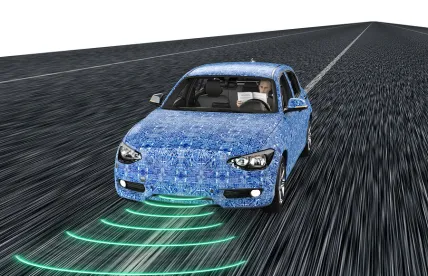John Stuart Mill once said that “[e]very great movement must experience three stages: Ridicule, discussion, adoption”. What matters to modern industry stakeholders isn’t how they approach each of these stages, but how actively they evaluate each “great movement” before it becomes a disruption they can’t overcome.
Disruption isn’t some type of sudden event that occurs overnight, but rather, it is a slow chipping and eroding away of the status quo. When this chipping and eroding goes unnoticed, that’s when it has its most destructive potential to existing industries. The defense to disruption isn’t entrenchment in existing ways, but realizing that change is occurring and embracing change and innovation as ways to improve what you already offer customers, stakeholders, and employees.
On almost a daily basis we see in newspapers, online blogs, and other publications claim that autonomous vehicles and their offshoots are disruptors of existing industries and jobs. According to these publications, autonomous vehicles will be the death of various industries and their jobs – apparently, just as millennials are the reason so many industries our parents may have enjoyed are also being destroyed as well, but I digress. If you are to believe these publications, autonomous vehicles will soon replace hotels and AirBnBs, food delivery drivers, taxi and ridesharing drivers, and all other forms of industries that may or may not currently be dependent on drivers. Yet, contrary to the fearmongering in the news, just as millennials aren’t currently killing any industries or the economy, the death of other industries and their associated jobs is just a bit premature, for now. But, this doesn’t mean companies, industry leaders, stakeholders, workers, college students, and consumers shouldn’t be thinking of how this emerging technology will be changing their professional and personal lives quicker than they might care to think.
According to an August 2017 report from the Department of Commerce’s Economics and Statistics Administration, there were 15.5 million workers with jobs related to driving in 2015. Of these jobs, only 3.8 million workers actually operate vehicles that require long-distance driving on open roadways, such as long-haul truckers or taxi/chauffer drivers. These long-haul drivers face the most risk because their highway driving conditions are more easily automated than driving in congested, urban environments. The remaining 11.7 million workers involved delivery drivers, postal employees, emergency first responders, and others which, will continue to benefit from autonomous enhancements, but likely won’t have their jobs immediately replaced due to the interaction with consumers as a part of their job.
Even with the need for being consumer facing, these drivers aren’t entirely immune to the disruption of autonomous vehicles. Embracing the change these bring into the marketplace will be pivotal to staying competitive, both in the near and far term. For instance, Dominos and Ford Motor Company are testing the potential for self-driving cars to deliver pizzas to your door without the need for a delivery driver in Miami and Ann Arbor. Similarly, General Motors and their Cruise Automation unit have partnered with DoorDash to automate your restaurant food deliveries from restaurant to your front door in San Francisco. While it’s not expected that these partnerships will reach the mass market in 2019 and put high school students and the gig-economy out of a job just yet, by 2040, Goldman Sachs estimates that autonomous vehicles will replace over 300,000 driving related jobs per year as autonomous vehicles hit mass adoption.
Of course, such predictions of the future and disruptive technologies have the potential to be widely off. This was evident by one study commissioned by a major telecom provider that predicted by the year 2000, only 900,000 subscribers would being using cellphones in the US. In reality, when the year 2000 came around, over 109 million subscribers were using cellphones in the US alone. So does this mean autonomous vehicles will arrive in 2020, or does it mean they won’t arrive until 2075? That’s a question no one knows, but what is known is the need to evaluate and embrace disruption in conventional and unconventional ways going forward.



 />i
/>i
